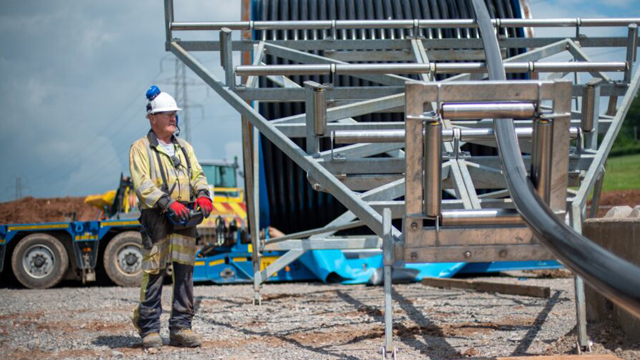
In pictures: Mendip Hills cable pull completed
All 102km of cable now in the ground under the Mendip Hills AONB
National Grid and Balfour Beatty engineers working on the Mendip cables stage of the Hinkley Connection Project have completed the installation of high-voltage, 400kV cables under the Mendip Hills AONB.
Starting in February 2021, the team has pulled a total of 102km cables (the distance between Bridgwater and Gloucester). The cables were delivered on 108 separate cable drums, each holding approximately 1km of cable, weighing between 35-50 tonne and standing 5 metres high. Cables were laid in the ground directly from the drums using specialist pulling equipment. Work now continues on joining all the 1km sections together and a programme of testing ahead of energisation of the cables by October 2022. Full reinstatement and completion of the underground works is expected by 2024.
Once the cable is energised and the existing pylons removed next year, this will be the first time that this area of the Mendip Hills has been pylon-free since the 1960s.
National Grid is often asked why so many kilometres of cable are needed when the distance between Loxton and Sandford is only 8.5km. That’s down to the design of the underground cables. To have the same electrical capability as the overhead lines that are being removed, 12 cables are required. These are divided across four cable trenches, with three cables in each trench.
Photos below show the final cable pull linking up to the Cable Sealing End pylon in Sandford substation, where the underground cables connect to the new overhead lines that feature T-pylons. The animation above explains the engineering process and what’s involved in the construction of these underground cables.

Cable drum number 108.

The pulling of the final cable section begins.

The final cable section is pulled through the cable duct.



Approaching the CSE pylon at Sandford substation.

The cable is pulled up the CSE pylon at Sandford where it will be connected to the overhead line.
Watch video below


